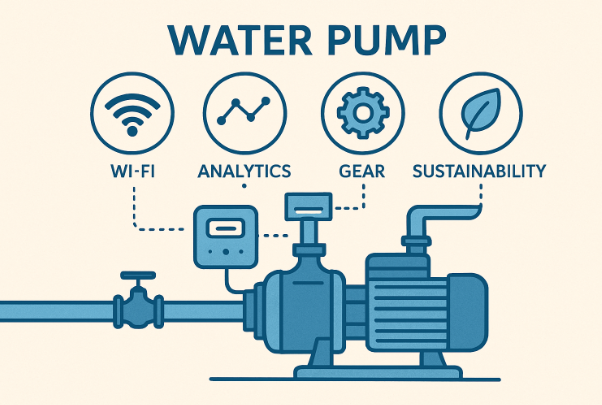
Introduction
Water management systems are fundamental to sustainable development, acting as the backbone not just for cities and industries but also for rural areas and critical infrastructure. A reliable water supply is essential for sanitation, manufacturing, agriculture, and the well-being of entire populations. In an era marked by climate change, population growth, and shifting environmental regulations, advances in modern pump technology are transforming how societies secure and distribute their most vital resource. These developments are enabling organizations to achieve impressive levels of operational efficiency while reducing their environmental footprint. For industry professionals eager to stay ahead of the technological curve, click here for an in-depth look into next-generation pump solutions from global leaders in the field.
The adoption of advanced pump technologies is not just a response to market trends but also a strategic necessity due to water scarcity and rising energy costs. This shift towards efficiency and sustainability is driven by utilities, industrial operators, and public sector agencies seeking a smarter, greener, and more resilient water management approach.
Energy-Efficient Pump Designs
Variable Speed Drives: A Game Changer
Variable speed drives (VSDs) are electronic controllers that adjust the speed of pump motors in real time according to system needs, resulting in energy savings of up to 50%. This approach not only reduces operational expenses but also offers flexibility during peak and off-peak times. The U.S. Department of Energy states that deploying VSDs is critical for utilities to reduce emissions and comply with environmental standards. VSDs also minimize mechanical wear and tear, prolonging the useful life of necessary assets and lowering the risk of unexpected breakdowns. As global efficiency requirements grow and regulatory frameworks tighten, high-performance, energy-efficient pumps are shaping the new international industry standard.
Smart Pump Systems and IoT Integration
Real-Time Monitoring and Predictive Capabilities
The advent of smart, digitally-enabled pump systems, powered by the Internet of Things (IoT), has revolutionized water infrastructure. These systems capture and transmit detailed data, enabling real-time monitoring from anywhere. This allows for rapid issue detection, ensuring water infrastructure reliability. IoT-powered pump systems also offer predictive maintenance capabilities, allowing for precise scheduling of maintenance. This not only minimizes downtime but also maximizes asset availability. Operators gain a powerful tool for maintaining water quality, reducing operational risk, and ensuring regulatory compliance.
Advanced Materials and Coatings
Materials science has led to improvements in pump design and longevity for modern water systems. Advanced alloys and polymer-based composites are replacing conventional pumps, offering resistance to corrosion, scaling, and chemical attack. These materials can significantly extend the operational lifespan of pumps handling aggressive fluids, brine, or corrosive chemicals. High-performance coatings also reduce friction, energy use, and internal wear, ensuring safer, more efficient performance.
Integration with Renewable Energy Sources
The Rise of Solar and Wind-Powered Pumps
Organizations are focusing on decarbonizing their operations by utilizing renewable energy sources like solar panels and wind turbines. These systems are being used for off-grid water supply, irrigation, livestock watering, and humanitarian relief. They offer low-maintenance, low-carbon solutions that can scale easily with demand, making pump operators at the forefront of global sustainability initiatives.
Predictive Maintenance and AI-Driven Analytics
AI and data analytics are revolutionizing pump operator maintenance strategies by detecting subtle performance shifts, vibration patterns, and early signs of wear. This early intervention reduces repair costs and the risk of catastrophic failure. Asset managers are moving towards a strategic, condition-based approach, maximizing uptime and minimizing ownership costs. As these intelligent systems evolve, they are expected to drive industry-wide improvements in sustainability, efficiency, and safety.
Enhanced Pump Design and Engineering
Digital engineering methods, including computational fluid dynamics (CFD) and 3D printing, have revolutionized pump design and construction. CFD allows designers to simulate fluid behavior and optimize pump architectures before physical prototypes are built, resulting in efficiency gains and reduced costs. 3D printing enables rapid prototyping and production of custom pump components, reducing supply chain delays and facilitating bespoke solutions for unique challenges.